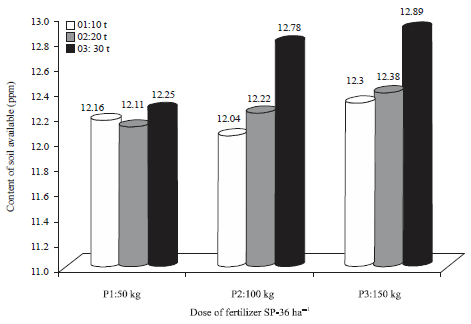Research Article
Phosphate Fertilization Efficiency Improvement with the Use of Organic Fertilizer and its Effect on Soybean Plants in Dry Land
Department of Agroteknologi, Universitas Muslim Indonesia, Urip Sumoharjo, Road No. 226, Makassar 90231, Indonesia
LiveDNA: 62.25602
Andi Ralle
Department of Agroteknologi, Universitas Muslim Indonesia, Urip Sumoharjo, Road No. 226, Makassar 90231, Indonesia
St. Sabahannur
Department of Agroteknologi, Universitas Muslim Indonesia, Urip Sumoharjo, Road No. 226, Makassar 90231, Indonesia














